Advertisement
Warning Signs And Safety News From BoatUS Marine Insurance
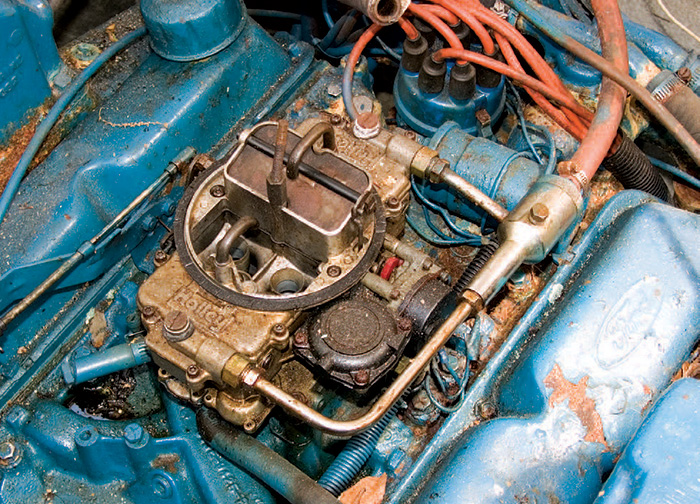

Completely Exhausted
On many boats, the muffler is connected to the exhaust outlet with a reinforced rubber hose. Exhaust hoses are pretty long-lived, but that doesn't mean they can be ignored. A simple visual inspection confirms that this hose is dried out, cracked, and needs to be replaced immediately. It's important to use the correct hose for exhaust systems: Hoses must be temperature-rated to at least 250°F and reinforced so they won't collapse. American Boat & Yacht Council (ABYC) guidelines also state that exhaust hoses must be double clamped at each end and that each clamp be made entirely of stainless steel with a band width of not less than ½ inch.
An exhaust hose that leaks will likely allow poisonous carbon monoxide (CO) to collect inside the boat. CO has no smell and can kill, which is why we recommend installing CO detectors in accommodation spaces.
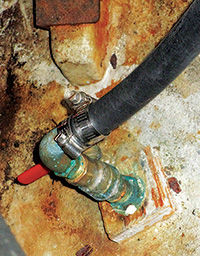
Suck It Up
This photograph shows the engine water intake on a small sailboat, which, to the untrained eye, appears perfectly acceptable. However, it is something of a red flag to surveyors and something they often encounter. First, the fitting shown is meant for domestic plumbing and is made from brass. Bronze is the only acceptable metal alloy for use below the waterline. When brass is immersed in seawater, over time the zinc in the brass is consumed leaving behind the weak copper, likely leading to a failure of the fitting and a sunk boat. Second, there is no seawater strainer, which allows debris, such as seaweed and small shellfish, to be sucked up the hose, potentially leading to wear and failure of the engine's raw-water pump as well as a clogged heat exchanger. Finally, there is no bonding connection, and the backing plate for the skin fitting looks a little small. Skin fittings have to be able to withstand a 500-pound force applied to the inboard end for 30 seconds, a test this fitting would likely fail.
Splitsville
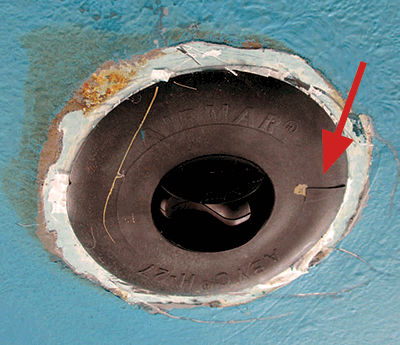
Thru-hull paddlewheel speed transducers are pretty common. The transducer slots inside a plastic skin fitting and, although reliable, it should be installed with the same care and consideration that goes into any hull penetration. This transducer was installed by an owner who could not understand why water was leaking into the bilge once the boat was launched – a problem that, if gone unnoticed, could have sunk the boat at the dock. It was only after efforts by the owner to correct leaks from the inside of the boat proved fruitless that the boat was hauled and a surveyor was called in.
Although the fitting looked fine on the inside of the boat, an inspection of the outside showed that the flange around the fitting had split, likely caused by overtightening the nut on the inside. To make matters worse, the owner used 3M 5200, an adhesive polyurethane, to seal the fitting when he installed it, making removal and replacement difficult and time-consuming.
Although everything worked out, some jobs might be better left to the pros. If you have any doubt about what you are doing, seek out the services of a qualified technician.
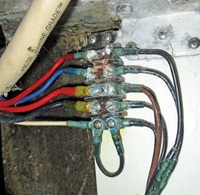
That Sinking Feeling
Here's a connection block to a high-capacity bilge pump on a large sailboat. Electrical connections should be sited well above the normal bilge water level as these were. But the connections were in a hard-to-reach location, were not inspected for many years, and eventually corroded in the damp atmosphere. The corrosion lead to high electrical resistance, which prevented the pump from working. This in turn caused the water level to rise from a slow leak. While that's bad enough, eventually the connection block submerged below the bilge water level creating an electrical route to ground through the seawater that drained the boat's batteries and caused severe wasting of the propeller due to stray current corrosion.
The owner was left with a bill for several thousand dollars for new batteries and a prop, something that could have been avoided if the connections had been periodically checked and corrosion rectified.
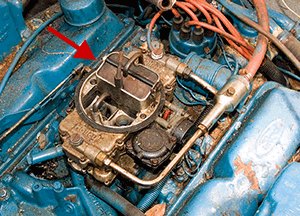
Fire In The Hole
Open up the hood on almost any gas-powered boat and you'll often see a pancake-shaped air cleaner atop the engine. Except that this is not really just an air cleaner — it's a spark arrester. If an engine backfires, flames can literally shoot back through the carburetor, igniting any accumulation of gasoline vapors and causing a deadly explosion. A spark arrester, something that is missing on this boat (see arrow), does exactly what it says.
While the surveyor was quick to note the missing spark arrester, he also noted that the red fuel hose is not rated for ethanol, likely original equipment installed before the introduction of gasoline containing ethanol.
What's Wrong With This Picture?
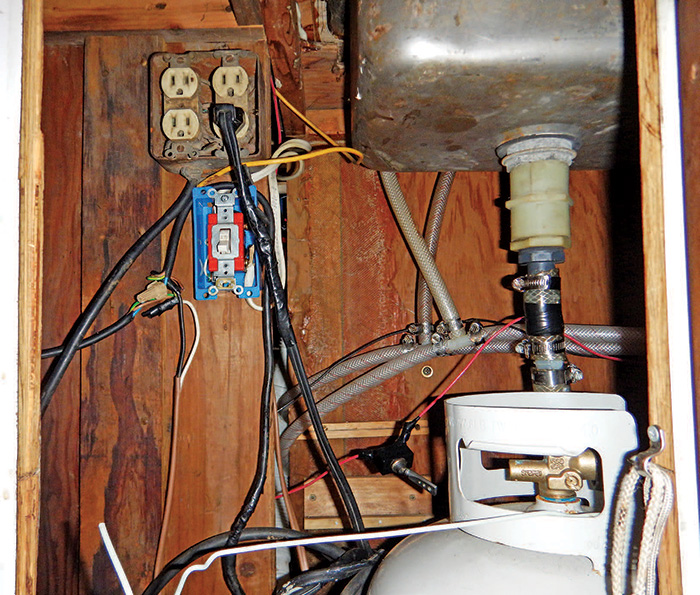
Here at BoatUS, electrical issues make for a disproportionate number of insurance claims and calls for a tow when something goes awry. This photograph shows an all-too-common scenario. There's plenty wrong here, and we see many serious infractions. How many can you identify? Look for answers and explanations in the next issue.
